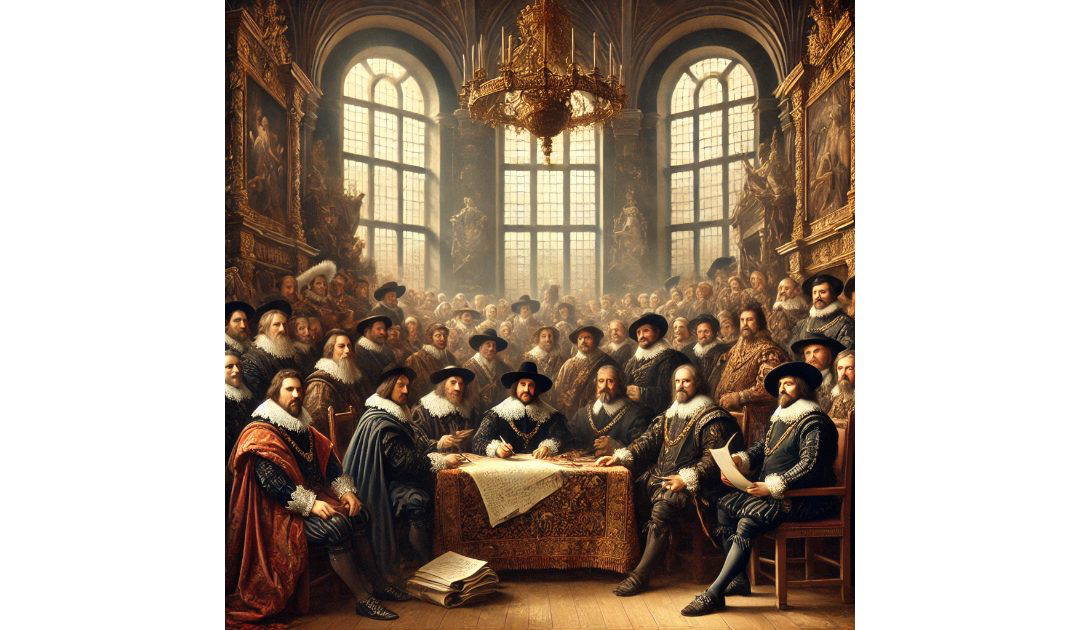On the 9th of April, 1609, Spain and the Dutch Republic signed the Treaty of Antwerp, bringing about a twelve year truce in the Eighty Years’ War. My ancestor, Sir Anthony Standen, was sent by Francis Walsingham as a spy to Flanders in 1570 were the Eighty Years’ War was in full swing. I have written his story in The Spy who Sank the Armada.
The Treaty of Antwerp, signed in 1609, marked a pivotal moment in European history. This treaty effectively brought an end to the hostilities between Spain and the Dutch Republic, initiating a twelve-year truce in the Eighty Years’ War. This period is often referred to as the Twelve Years’ Truce, and it provided a much-needed respite from decades of relentless conflict and economic strain.
The Eighty Years’ War, a revolt of the Seventeen Provinces in the Low Countries against the Spanish Empire, began in 1568. The conflict was rooted in political, economic, and religious tensions. The provinces sought independence from the Spanish crown, which was firmly rooted in Catholicism and ruled by Philip II of Spain. The Dutch, largely Protestant, faced severe repression and high taxation imposed by Spanish rule. Over time, these grievances escalated into an all-out rebellion, leading to a prolonged and devastating conflict.
Negotiations for the treaty began in earnest in 1607, as all parties involved were increasingly weary from the prolonged warfare. The economic toll of the conflict had been immense, and there was a growing desire for peace. Maurice of Nassau, the military leader of the Dutch, and Albert VII, Archduke of Austria and Governor-General of the Habsburg Netherlands, were principal figures in the negotiations.
The negotiations were complex, involving various European powers. The Dutch Republic had emerged as a significant maritime and economic power and sought recognition of its independence. Spain, facing financial difficulties and threats from other European powers such as France and England, was inclined towards a temporary cessation of hostilities. The negotiations were facilitated by King Henry IV of France and James I of England, who were keen on stabilizing Europe and curbing Spain’s dominance.
The Treaty of Antwerp, signed on 9 April 1609, was a pragmatic truce rather than a permanent peace agreement. The truce was set to last for twelve years, during which time both parties agreed to cease all hostilities. The key terms included:
- Recognition of the United Provinces: While Spain did not formally recognize the Dutch Republic’s independence, the truce implied recognition of the United Provinces as a separate entity.
- Suspension of Warfare: Both parties agreed to suspend all military operations. This included a cessation of maritime warfare, which had severely affected trade.
- Trade Agreements: The Dutch were allowed to continue their trade with Spain and its colonies. This was significant for the Dutch economy, which heavily relied on trade.
- Religious Tolerance: Though not explicitly stated, there was an understanding of religious tolerance within the territories.
The Treaty of Antwerp had far-reaching implications. It allowed the Dutch Republic to consolidate its power and continue its economic expansion, leading to what is often termed the Dutch Golden Age. This period saw significant advancements in arts, science, trade, and military prowess.
For Spain, the truce provided a much-needed relief to regroup and address other pressing issues within its vast empire. However, the war resumed after the truce ended in 1621, with the Dutch eventually securing their independence in the Peace of Westphalia in 1648.
The treaty also shifted the balance of power in Europe. It paved the way for a more stable and multipolar Europe, curbing Spain’s dominance and allowing other nations like England and France to rise in prominence.
The Treaty of Antwerp was a significant diplomatic achievement that showcased the complexities of early modern European politics. It brought temporary peace and allowed for economic recovery and political restructuring, significantly influencing the course of European history. While the truce was not a permanent solution, it demonstrated the potential of diplomatic negotiations in resolving seemingly intractable conflicts, setting a precedent for future peace treaties.

